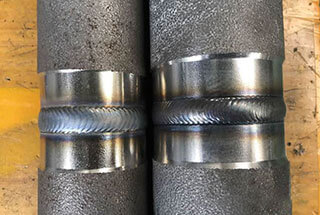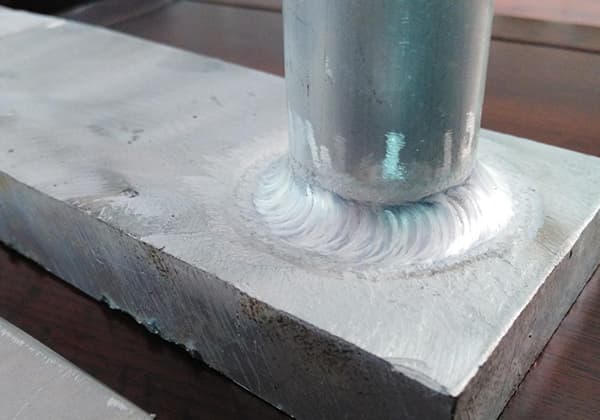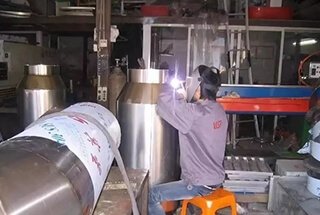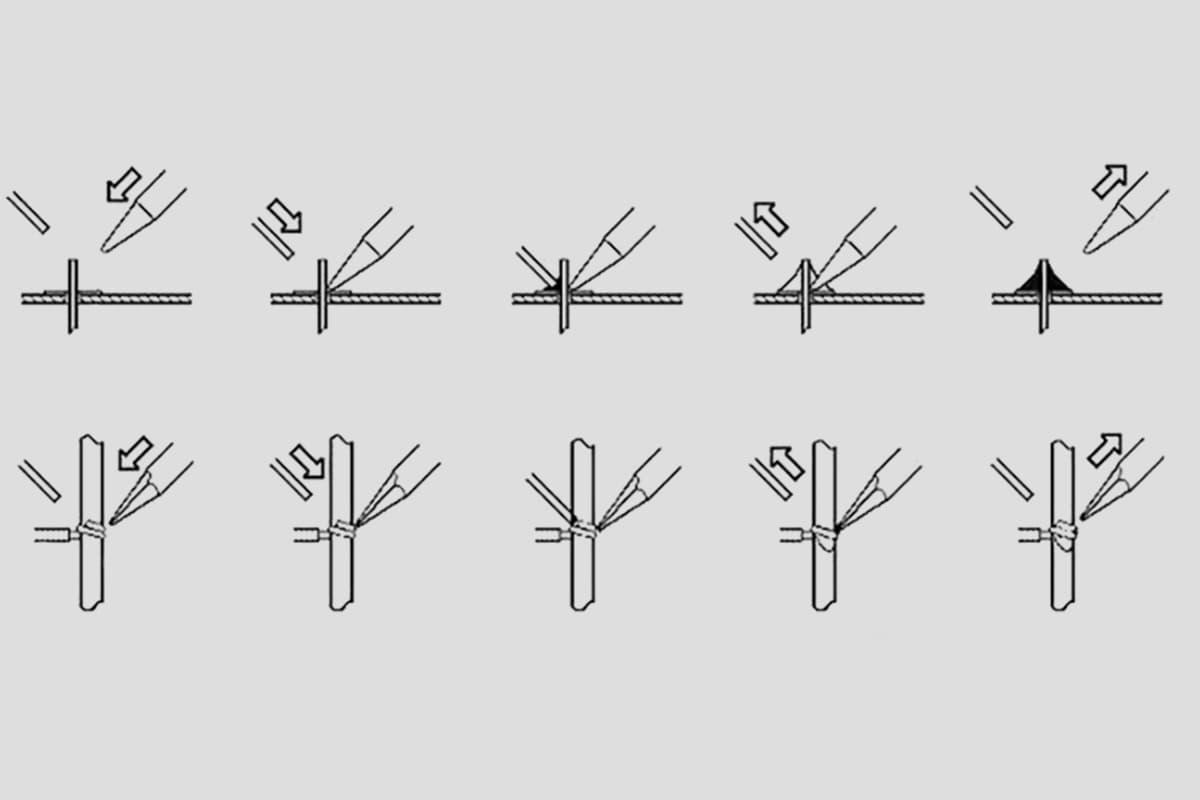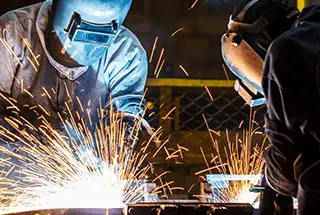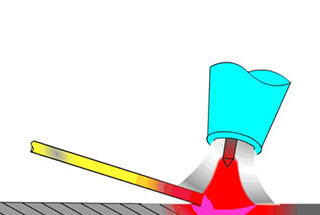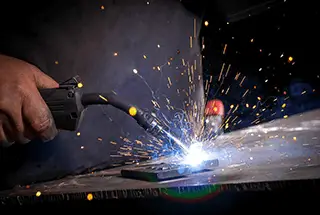
Have you ever wondered how a simple welding task can turn deadly in an instant? This article explores real-life welding accidents, revealing the critical safety measures often overlooked. Learn essential tips to prevent such tragedies and ensure a safer work environment.
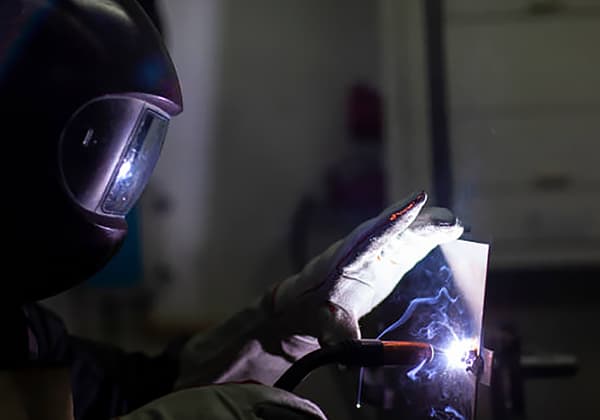

Incident Description
A welder in a factory was working outdoors on a temporary construction site. Due to the lack of a power switch box, he removed the rubber at the head of each strand of the power cable and connected them to the open-air power line.
As he mistakenly connected the neutral wire to the live wire, he was electrocuted and killed when adjusting the welding current and touching the casing.
Primary Cause Analysis
The welder was unfamiliar with electrical safety knowledge, and the misconnection of the neutral wire and live wire led to the casing of the welding machine becoming electrified, causing a fatal electrocution accident.
Primary Preventive Measures
Only certified electricians should connect welding equipment. Welders should not perform this task on their own.
Incident Description
A young female welder in a shipyard was welding inside a ship’s cabin. Due to the high temperature in the cabin and poor ventilation, her work clothes and leather gloves were soaked with sweat.
She was electrocuted and fell backward in a spasm when she touched the welding clamp while changing the welding rod. The welding clamp fell on her neck and she couldn’t get it off, leading to her death despite rescue efforts.
Primary Cause Analysis
(1) The no-load voltage of the welding machine exceeded the safe voltage.
(2) The high temperature in the ship’s cabin caused the welder to sweat heavily, reducing body resistance and increasing the risk of electric shock.
(3) The electric shock was not detected in time, allowing the electric current to pass through the body for a longer duration, causing severe damage to vital organs such as the heart and lungs, leading to unsuccessful rescue efforts.
Primary Preventive Measures
During cabin work, a supervisor should be appointed to monitor the welder’s situation at all times. In case of any signs of danger, the power should be immediately cut off for rescue.
Incident Description
During spot welding of an iron shell in a factory, welders A and B noticed a broken lead wire on the welding machine. An electrician only provided them with a piece of flexible wire for B to replace on his own.
While B was changing the wire, he noticed that the bolt of the primary line terminal board was loose, so he tightened it with a wrench (at this time, A was not at the scene). After testing the welding a few times, B left the scene.
A returned later and, unaware of the situation, began to spot weld. After only one weld, A screamed and fell to the ground. Worker C immediately cut off the power, but A died as the rescue was not in time.
Primary Cause Analysis
(1) The terminal board was burned out, causing the coil and the casing of the welding machine to collide and short-circuit.
(2) The welding machine casing was not grounded.
Primary Preventive Measures
(1) Equipment maintenance should be performed by an electrician.
(2) Welding equipment should be grounded.
1. Accident Details
In a structural workshop of a machinery factory in Shanghai, several welding machines were used to weld product bases.
During a moment when a welder was turning on the circuit breaker with his right hand and holding the welding machine with his left, he suddenly yelled and collapsed. Despite immediate medical intervention, he passed away.
2. Main Cause Analysis
(1) The welding machine casing was electrified.
(2) The welder was not wearing insulating gloves or shoes.
(3) The grounding of the welding machine failed.
3. Primary Prevention Measures
(1) Equipment insulation and grounding should be checked for damage before work.
(2) Welders should wear personal protective equipment.
(3) When pushing or pulling the power circuit breaker, wear insulating gloves, act quickly, and stand to the side.
1. Accident Details
A maintenance welder at a pesticide factory entered a breeding pot (1m in diameter, 2m high) to weld a baffle. Without installing a smoke exhaust system, he blew oxygen inside the pot to eliminate smoke.
Upon reentering the pot for welding, a loud bang was heard, and the welder suffered burns covering 88% of his body, with 60% being third-degree burns. He succumbed to his injuries seven days later.
2. Main Cause Analysis
(1) Using oxygen as a ventilation source is a serious violation.
(2) No ventilation device was installed for welding inside the container.
3. Primary Prevention Measures
(1) A ventilation device should be installed for welding inside a container.
(2) The ventilation source should be compressed air.
1. Accident Details
During welding, a construction team’s gas welder used a leaking torch. The flame from the adjustment wheel burned the welder’s palm, causing blisters. Despite applying badger oil and continuing to work, backfire occurred again during the welding process.
The oxygen hose exploded, the regulator caught fire and was destroyed. By the time the oxygen cylinder valve was closed, the top half of the cylinder was too hot to touch, presenting a serious hazard.
2. Main Cause Analysis
(1) A leaking torch is prone to backfire.
(2) The oxygen cylinder valve and regulator were greased, leading to backfire, which caused intense burning due to the strong oxidation effect of compressed pure oxygen.
3. Primary Prevention Measures
(1) Before gas welding, check the torch for leaks. If leakage is found, discontinue use and continue welding only after repair.
(2) Do not use gloves with grease to open the oxygen cylinder valve and regulator.
1. Accident Details
A welder from a shipyard applied for a hot work permit. The firefighter approved the request without visiting the site.
After the welder used a torch to cut off a piece of metal, sparks ignited the oil residue under the ship, causing a major fire.
Attempts to put out the fire with water and fire extinguishers were unsuccessful, resulting in five deaths, one serious injury, and three minor injuries.
2. Main Cause Analysis
(1) The firefighter was negligent and approved the hot work without inspecting the site.
(2) There was oil residue beneath the hot work area.
(3) The onsite personnel lacked knowledge of firefighting.
3. Primary Prevention Measures
(1) Firefighters should inspect the site before approving hot work.
(2) Oil residue under the hot work area should be cleaned.
(3) Employee safety education should be enhanced.
1. Accident Details
On the night of December 25, 2000, Christmas Eve, the Dongdu Shopping Mall in the old city of Luoyang was brightly lit. Taiwanese businessmen recently rented a floor and basement in Dongdu Shopping Mall to open a Luoyang branch of the Zhengzhou Dennis Department Store, which was set to open for trial operation on the 26th.
While they were busy decorating, a disco on the 4th floor of the mall was hosting a Christmas carnival.
However, as everyone was immersed in the Christmas cheer, a few small sparks from electric welding downstairs ignited the basement under renovation.
The fire and thick smoke quickly reached the disco on the top floor, causing a massive disaster that claimed 309 lives.
2. Main Cause Analysis
(1) The direct cause of the fire was that the four welders hired by Dennis had not received safety training and were working in violation of regulations without a special operation permit.
(2) No preventive measures were taken. The reckless construction led to red-hot welding slag falling and igniting flammable items such as wooden furniture and sofas in the basement furniture store.
(3) In panic, some tried to extinguish the fire with a water cage, but it failed. Instead of alerting the authorities, they fled the scene, delaying fire suppression and evacuation opportunities, leading to 309 deaths from smoke inhalation.
3. Primary Prevention Measures
(1) Welders should have the proper certification; fire prevention should be a priority during the welding process.
(2) Proper protective measures should be taken at the welding site.
(3) A dedicated safety officer should be assigned to monitor for potential fire hazards.

